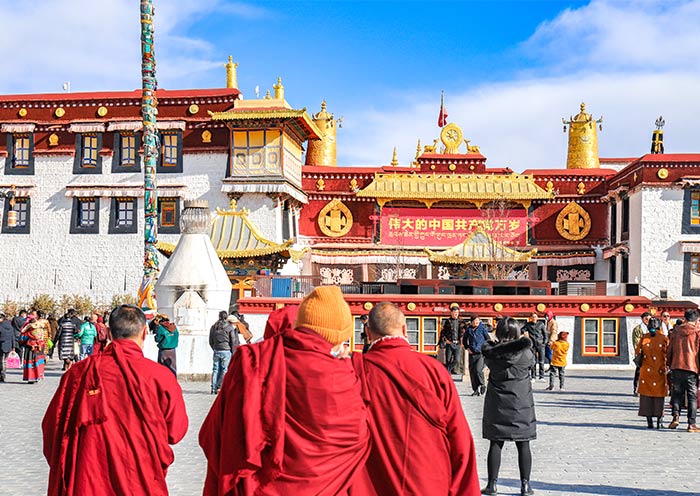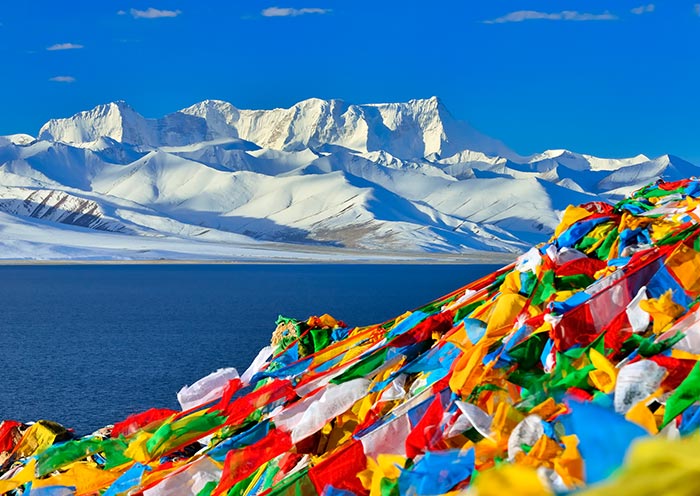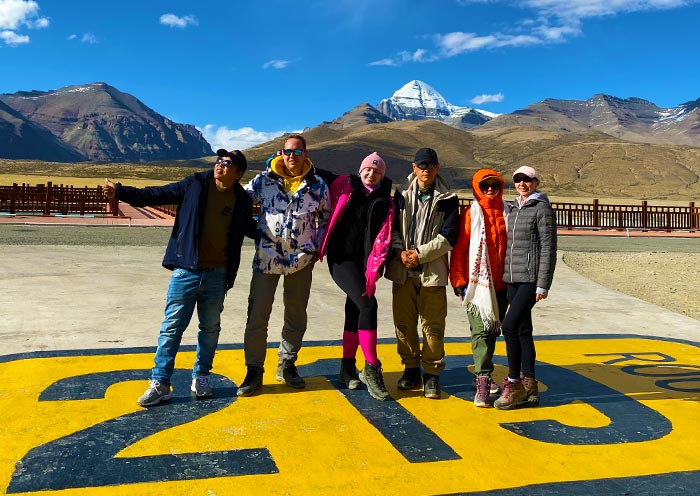Weather in Tibet in July: Overview
Tibet in July falls within the summer monsoon season, which starts in June and ends in September.
| Destination | Average Temperature (°C) | Average Rainy Days | Average Sunny Days |
|---|---|---|---|
| Lhasa | 8 - 25 | 20 | 11 |
| Shigatse | 10 - 24 | 16 | 15 |
| EBC | 6 - 18 | 13 | 18 |
| Namtso Lake | 6 - 20 | 15 | 16 |
| Mt. Kailash | 7 - 22 | 12 | 19 |
| Guge Kingdom | 11 - 26 | 11 | 20 |
| Nyingchi | 15 - 28 | 23 | 8 |
Temperature: July is one of the warmer months in Tibet, with average temperatures ranging from 9°C (48°F) to 22°C (72°F), depending on the altitude and the region. In Lhasa, the average high temperature is usually around 22°C (72°F), while the average low is around 9°C (48°F).
Rainfall: July also marks the beginning of the rainy season in Tibet, with increased rainfall, particularly in the southeastern regions, such as Nyingchi. However, most of the rain typically falls at night and does not generally disrupt daytime activities.
Sunlight: Despite the rain, July still offers plenty of sunshine with an average of 8 hours sunny hours each day. The UV radiation can be strong so it's important to bring sun protection.
In general, despite the rainfall, July is considered one of the best months to visit Tibet due to the warmer temperatures and lush green scenery. However, conditions can vary markedly depending on where in Tibet you are traveling and weather can be unpredictable, so it's always important to check the specific forecast for your destination.

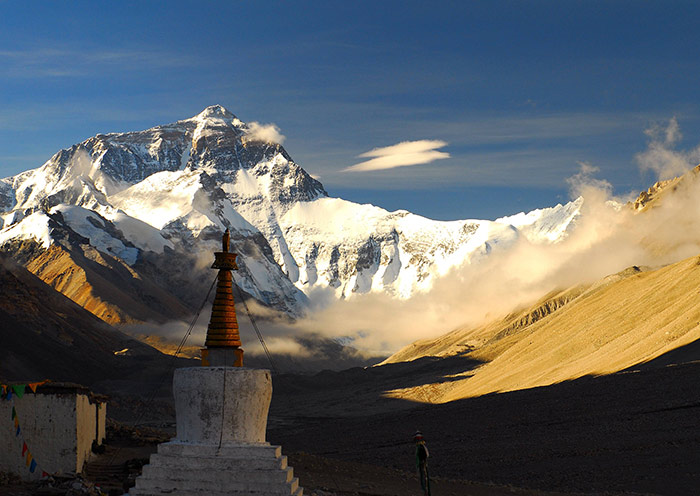
What to Wear in Tibet in July & Packing Tips
When planning your outfit for a July trip to Tibet, it's useful to consider the distinct climates across the region. Here's a guide for each area:
Lhasa, Shigatse, Shannan, and Central Tibet: Daytime temperatures are milder, so light, breathable clothing such as T-shirts and long sleeves are suitable. For cooler evenings, keep a jacket or sweater handy. Rain gear is recommended as July falls within the monsoon season.
Everest Base Camp: The weather here can be unpredictable. Layered clothing works best, with warm clothing for the day and extra layers for significantly colder nights. A warm jacket or fleece is essential, as are rain and windproof outer layers.
Mount Kailash and Western Tibet: This area can be quite cold even in summer. Pack thermal base layers, a down jacket, and hats and gloves for warmth. Waterproof boots and rain gear are also advised due to the possibility of rain and snow.
Namtso and Northern Tibet: Despite it being summer, this region can be chilly, especially at night. Warm clothing and windproof jackets are recommended, along with rain gear.
Sun Protection: Regardless of the region, the high-altitude sun in Tibet can be intense. Always pack a hat, sunglasses, and sunscreen for protection.
Comfortable Footwear: Regardless of where you are in Tibet, comfortable and sturdy shoes are a must, particularly if you plan to do any trekking. Waterproof boots can be very useful given the potential for rain.
Remember, the weather can vary greatly throughout Tibet. Always check the weather forecast for each region you plan to visit close to your departure date.
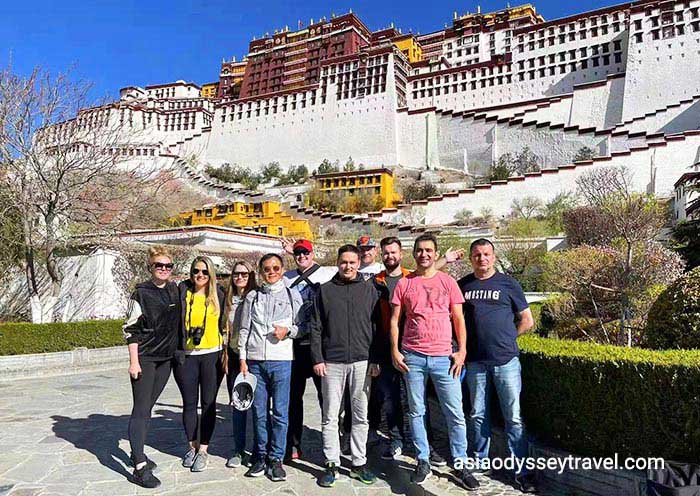
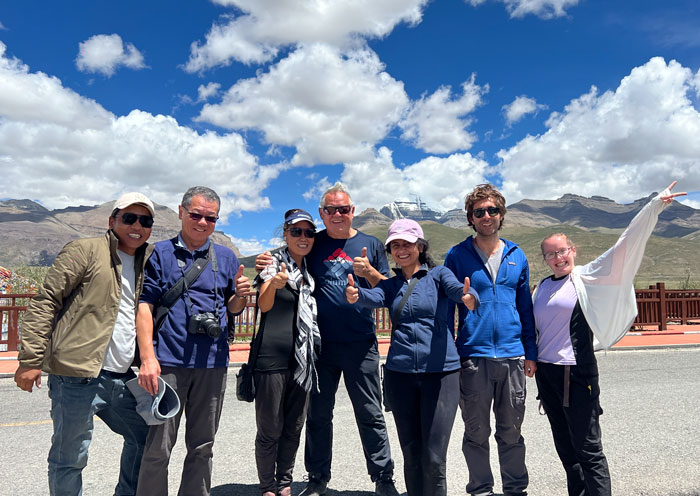
What to See in Tibet in July
July is indeed a peak season for tourism in Tibet and offers opportunities to explore the entirety of the region. You can visit the lower-altitude Nyingchi to marvel at the sea of clouds, explore temples in Shigatse and Lhasa, witness the world's highest peak at the Everest Base Camp, or traverse the vast, uninhabited areas of the Ngari North Route to experience the awe-inspiring high-altitude lakes. Here are the top five recommended places to visit in Tibet in July:
Ngari (Ali) Circuit in July
July unveils the optimal season to explore the Ngari circuit, a renowned route winding through the expansive Changtang Plateau in northern Tibet. This journey, taking over 15 days, offers an unparalleled encounter with the uninhabited high-altitude wilderness of Ngari and Nagqu. You'll be greeted by rare Tibetan antelope and other plateau wildlife, and be awe-struck by the scattered high-altitude lakes, shimmering like jewels strewn across the landscape. The circuit also provides unique interactions with native Tibetan villagers and nomads, offering an intimate glimpse of a life untouched by modernity. With the Changtang Plateau bursting into life, July presents the Ngari circuit at its most vibrant, making it an ideal choice for those planning a lengthy visit to Tibet.
Everest Base Camp in July
July at Everest Base Camp brings an abundance of greenery and rainfall, which can help mitigate altitude sickness. The journey to the base camp is a thrilling adventure, traversing the verdant, rain-drenched landscape and offering stunning panoramas of the Himalayan vista. However, the abundant rainfall might obscure the full view of Mount Everest's summit, adding a sense of mystique to its grandeur. This time of year also sees a surge in visitors, so be prepared for queues to take a commemorative photo with the monument. Despite the crowds and potential cloud cover, the base camp in July remains a unique experience – an encounter with nature's majesty veiled in monsoon mystery.


Namtso Lake in July
In July, Namtso Lake, one of the world's highest saltwater lakes, emerges as a mesmerizing spectacle. Set against the backdrop of snow-capped mountains, its crystal-clear turquoise waters are absolutely breathtaking. The lake's surroundings come alive with the summer bloom, painting a vibrant tableau of colors. The nomadic herders in the vicinity add a dynamic cultural element to the landscape. Namtso Lake in July is a feast for the eyes and a haven for photographers seeking to capture its ethereal beauty.
Lhasa in July
July in Lhasa unveils a city alive with spiritual fervor and natural beauty. Despite frequent nighttime rainfall, days are typically clear and sunny, offering a respite from the summer heat compared to other cities at the same latitude. The UNESCO World Heritage Site, Potala Palace, stands majestically against the azure sky, while the verdant gardens of Norbulingka, the summer palace, come alive in a riot of colors.
The city pulses with activity as devotees and tourists throng revered sites like the Jokhang Temple and the vibrant Barkhor Street. Lhasa in July is an immersive blend of rich cultural heritage and Tibetan Buddhism's vibrant traditions.
However, visitors should be aware of the strong ultraviolet rays and prioritize sun protection. July also marks the peak tourist season, with increased visitors, potential accommodation shortages, and higher prices. Thus, early booking of travel and accommodations is recommended for a seamless exploration of Lhasa's spiritual and cultural wonders.
Shigatse in July
July in Shigatse, the second-largest city in Tibet, presents a refreshing blend of culture and nature. Despite the frequent rainfalls, clear and sunny days predominate, illuminating the city's major attractions. The Tashilhunpo Monastery, the seat of the Panchen Lama, stands as a spiritual beacon, attracting both pilgrims and tourists.
The city's fertile plains, fed by the Brahmaputra River, are adorned with a vibrant array of summer blooms, offering a soothing contrast to the summer heat. The region's agricultural richness is on full display in the local markets, which are bustling with activity.


How to Plan a Tibet Tour in July
Day 1: Arrive in Lhasa and take the rest of the day to acclimate to the high altitude. Stay hydrated and avoid strenuous activity.
Day 2-3: Spend these days exploring Lhasa's key attractions, including the Potala Palace, Jokhang Temple, and Barkhor Street. Remember to apply sunscreen regularly to protect against intense UV rays.
Day 4: Travel from Lhasa to Shigatse, visiting Yamdrok Lake and Gyantse Monastery on the way.
Day 5: Travel from Shigatse to Everest Base Camp (EBC). Along the way, admire the beautiful landscapes and visit the Rongbuk Monastery. Stay overnight at a guest house or camp at EBC.
Day 6: Wake up early to witness the sunrise over Everest, then travel to Saga. The journey is long, so rest and hydrate well.
Day 7: Drive from Saga to Darchen, the starting point for the Kailash trek. Prepare for the trek and rest well.
Day 8-10: Perform the Kora around Mount Kailash over these three days. This is considered a holy pilgrimage in several religions.
Day 11: After completing the Kora, return to Darchen and then drive back to Saga. Rest for the remainder of the day.
Day 12: Travel from Saga to Cuoqin County. En route, enjoy the vast landscapes of the Changtang Nature Reserve.
Day 13: Drive from Cuoqin to Wenbu South Village. En route, visit Zari Namtso and Dangre Yongcuo. These lakes offer stunning views and are great spots for photography.
Day 14: Travel from Wenbu South Village to Bange. Along the way, you can visit several lakes, including the largest in Tibet, Siling Co (色林错).
Day 15: Drive back to Lhasa from Bange. On the way, take a detour to visit Namtso, one of the three holy lakes of Tibet. The beautiful turquoise waters and the view of the snow-capped Nyenchen Tanglha range are a sight to behold.
Day 16: Depart from Lhasa.

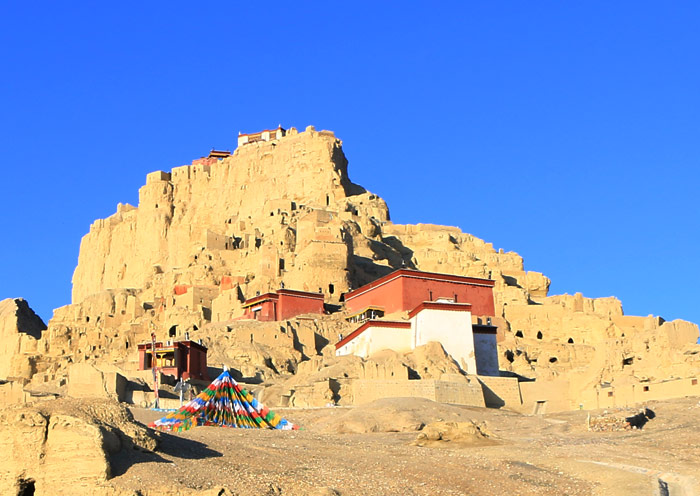
Explore Tibet with Asia Odyssey Travel
With over 10 years of local expertise in Lhasa and Tibet (Xizang), our dedicated team at Asia Odyssey Travel brings you carefully curated Tibet tours for an authentic and unforgettable experience.
Drawing upon our extensive experience, we have meticulously crafted a range of Tibet tour packages, including Lhasa tours, Mount Everest Tours, Mount Kailash Tours, Tibet Trekking Tours, Tibet Train Tours, and Tibet Overland Tours. Whether you prefer the comfort and flexibility of a private tour or the budget-friendly option of a group tour, we have you covered without compromising on quality.
Additionally, we cater to various travel preferences, whether you wish to commence your Tibet tour from one of the popular gateway cities in China, embark on Nepal Tibet tours, or even explore the mesmerizing Himalayan region. Whatever you desire, Asia Odyssey Travel has the perfect tour to meet your needs, ensuring that your expedition to Tibet (Xizang) becomes an unforgettable adventure.
More Helpful information about Tibet Weather:


